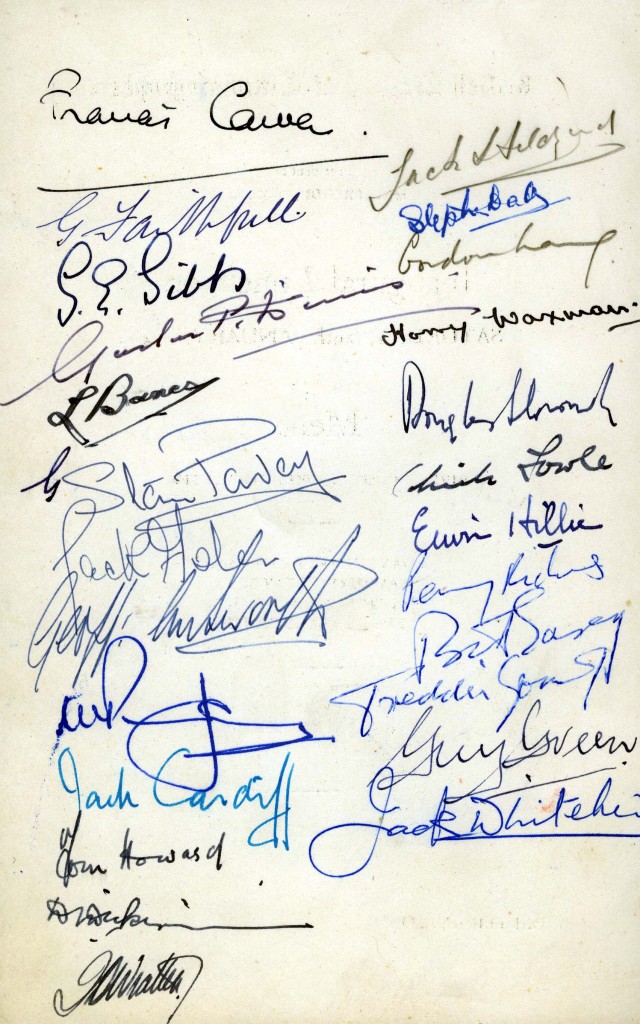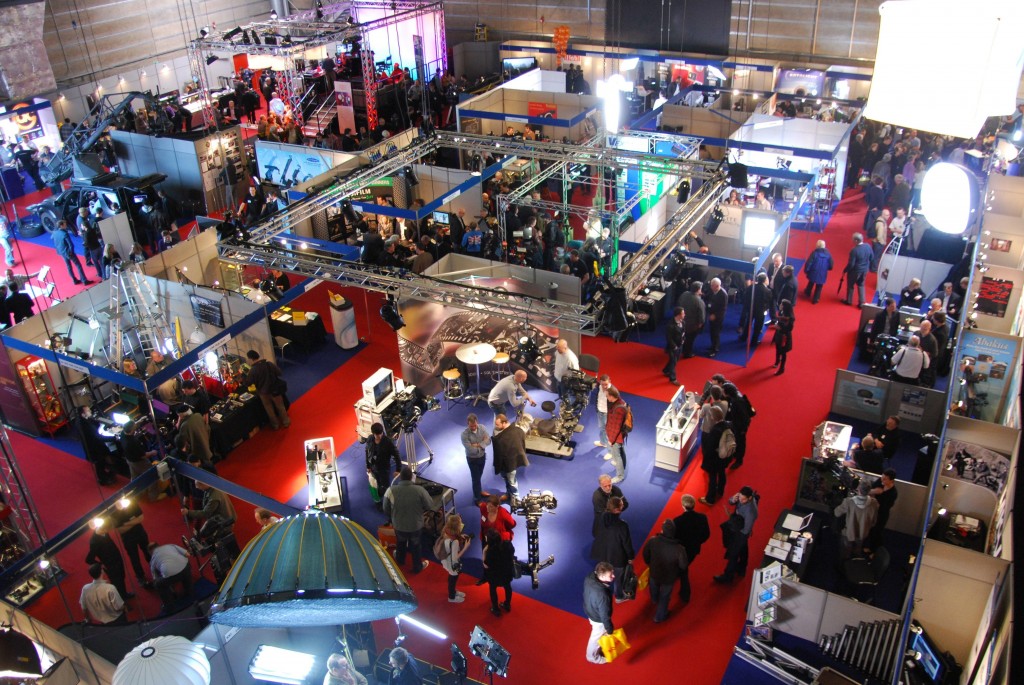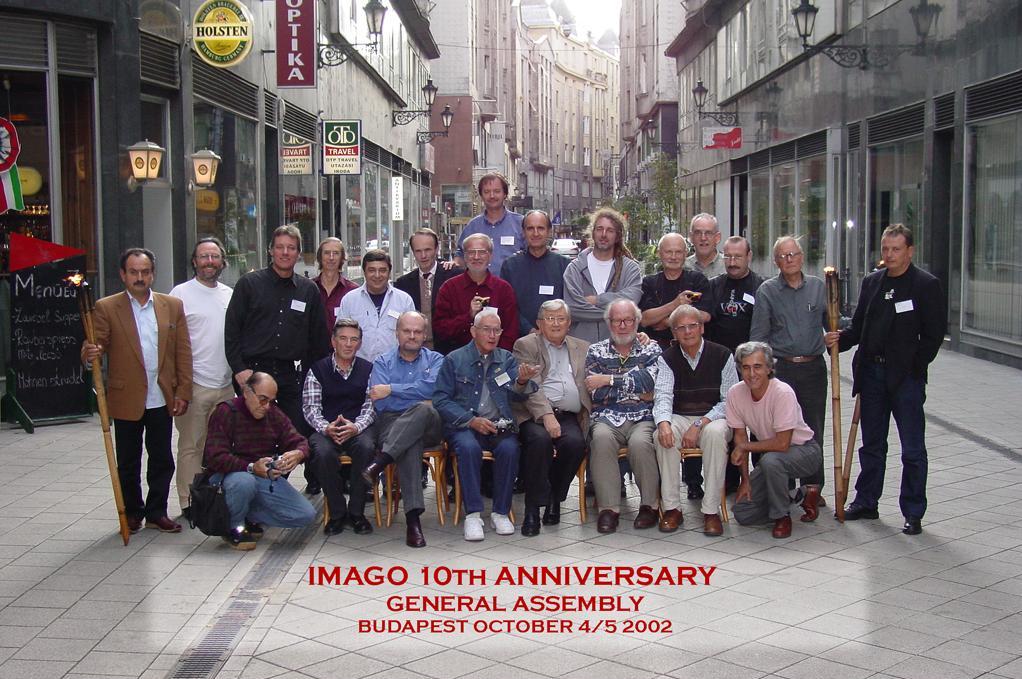Members Area
It was in 1947 that Bert Easey, then head of the Denham and Pinewood studio camera departments, first put forward the idea of forming a society of British cinematographers. Most of Britain’s distinguished cameramen were gathered for an industry dinner at the Orchard Hotel in Ruislip. Among the enthusiastic diners that night were such behind the camera luminaries as Georges Perinal, Desmond Dickinson, Guy Green, Robert Krasker, Harry Waxman, Otto Heller, George Hill, Jack Hildyard, Alex Tozer, Gordon Craig, Max Green, plus many other leading cameramen and representatives of various camera departments.

Bert Easey’s vision was that it would be a non-political guild or society, made up of feature production cameramen in the UK, based along similar lines to that of the prestigious American Society of Cinematographers which had been formed in 1919. With the enthusiastic approval of the assembled gathering and The British Society of Cinematographers Limited was born in September 1949.
The 55 original founder members were each issued with a £1 share and their objectives were fourfold:-
To promote and encourage the pursuit of the highest standards in the craft of Motion Picture Photography.

(Picture above: Signatures on menu card)
Freddie Young, at the time chief cameraman at MGM in (picture above: signature on menu at original inaugural meeting) Borehamwood, took the chair as the first president. Bert Easey was elected secretary and treasurer. Guy Green took on the role of vice-president and Jack Cardiff, Lovat Cave Chinn, Desmond Dickinson and Derick Williams were elected to the board.
The aims of the Society, however, weren’t entirely to the liking of the union, the Association of Cine Technicians, forerunner of BECTU. Freddie Young recalled meetings with the union organiser George Elvin: “He wanted us to be a branch of the union,” he said. “We wanted to have a society to meet in a friendly way to discuss cinematography.”
Initially, the Society’s meetings were held at the Orchard where the management curtained off a room. When the Orchard was refurbished, board meetings rotated around governor’s homes every six weeks. Although the dinners were most enjoyable it was very hard on the wives and was certainly impractical for those board members who had to be at the studios for early starts. It was decided to move them to weekends and these continued at Pinewood and Rank Labs until 1990.
That year, through the auspices of Shepperton chief, Denis Carrigan, the Society acquired an elegant club room, situated in the Old House where the corridors and meeting room display photographs of presidents and the honour boards listing the achievements of past and present members.
On December 7 1951, the Cinematographers held the first of its celebrated Operator Nights. The Orchard at Ruislip was the venue and the cost to attend that first function was just one guinea or in current money £1.05p. It was introduced to give DOPs the opportunity to express their gratitude to their operators. Over the years it has developed into one of the Society’s most successful annual functions and currently has a regular December slot at Pinewood Studios.
The Operator’s Night is also the occasion when the Society hands out its prizes for the year.
The first among these was The Bert Easey Technical Award named in honour of Bert’s tireless energy and unflagging enthusiasm that brought about the birth of the BSC. The award is a gift of the Board of Governors and only given to an individual or company who has contributed something outstanding in the way of endeavour or equipment. The initial award went to George Ashworth, Chief Engineer, Denham and Pinewood Studios, for outstanding work in designing and perfecting a beam splitter camera which advanced the technique of the travelling matte process. Over the years it has been bestowed on companies such as Lee Filters, Arnold and Richter, Eastman Kodak, The House of Samuelson, Panavision, Technicolor, Lee Electric and Rank Taylor Hobson for their cinematographic contributions. Talented individuals including Wally Veevers, Garrett Brown, Denys Coop, Bob Gottschalk, David Samuelson Les Ostinelli, Joe Dunton, Roy Moores, Jean Pierre Beauviala, Karl Kelly, Laurie Frost, Bill Chitty, Charles Staffell and Harry Baker are among those who have also been honoured.
Two years later, the BSC Best Cinematography Award, recently retitled the BSC Best Cinematography in a Theatrical Release award was inaugurated and voted on by the entire membership. Its first recipient was Ossie Morris for John Huston’s ‘Moulin Rouge’. Ossie’s award was a silver tankard. Later, Academy Award winning production designer Ken Adam was invited to design a futuristic golden camera for the annual winners. Each year the name of the winner of the Best Cinematography award was engraved on a plaque on the Society’s Golden Camera, a magnificent model of the celebrated Mitchell N C Camera. Crafted by renowned Pinewood camera engineer George Ashworth, a veteran of the first ever meeting of the Society, the model is on display in the glass case in the main entrance at Pinewood when not on show at BSC events. More recently Honour Boards, which line the corridor towards the ballroom, have been produced to record award recipients. The Golden Camera has also been presented to those members honoured with a Lifetime Achievement Award and another category exists, called the Special Achievement Award.
In later years ARRI contributed to the Operators evening by sponsoring the ARRI John Alcott Memorial Award, an award in memory of John Alcott, BSC who won many accolades for his work on Barry Lyndon and died tragically at a young age. This is given to the person who, in the opinion of the board, has contributed most towards perpetuating the original aims of the Society.
Between 1970 and 1998 members entertained their wives at the BSC Ladies Night, an annual Black Tie event, held for 28 years in the Lancaster Room at the Savoy Hotel. Honoured guests over the years included such celebrated names as Topol, Frankie Howard, Otto Preminger, Blake Edwards and Julie Andrews, Peter Sellers, Christopher Reeve, Donald Sutherland, John Hurt, Sir John Mills, Jacyln Smith, Stephanie Powers, Nigel Havers, Bob Hoskins, Bryan Forbes and Nanette Newman, Barry Cryer, Ian McShane, Sir Dirk Bogarde and Leslie Phillips.
In 2001, Roy Field was the first to receive a further new award,the Charles Staffell Award for Visual Effects which had been instigated in Charles’s memory, by Kevin Francis.
In 2011 the Society introduced the BSC Best Cinematography in a Television Drama Award and more recently still the BSC have joined with the ACO and GBCT with the introduction of Operators Awards for features, sponsored by ARRI and TV drama, sponsored by Ronford-Baker.
Other annual events in the BSC Calendar include the Annual General Meeting held at Pinewood Studios in late May or early June.

(Picture Above: Members gathered on the Pinewood Terrace following the Annual General Meeting in 2010)
In the summer, the Society gathers again at Pinewood for the BSC Summer Luncheon. First held in 1987, in the conservatory at Shepperton Studios, to honour the founder and veteran members of the Society, it proved such a success that a similar lunch had to be organised the following year to thank the Society’s patron members. In 1989 it marked the Society’s 40th anniversary and has now become an important summer gathering of cameramen, patrons and friends.
A new initiative in 1993, inspired by Joe Dunton, was the Society’s first Equipment Show, which featured the latest innovations from camera and lighting companies. Initially held at Shepperton, it was to prove so popular that further exhibitions were held in subsequent years at Pinewood, Mister Lighting and Grip House, Dukes Island, at Elstree Studios for many years.
The show grew enormously over the years and Rob Saunders of SCS Exhibitions came on board to lend it a more professional look. It is now entitled the BSC Expo and held annually. Historically held on Studio Stages, more recently at Pinewood and Leavesden; in 2016 as there was no studio space available it moved to Battersea Evolution in Battersea Park, which proved such a success for ease of access, that future years are planned there also, allowing Rob and Frances the ability to plan well in advance.
 (Picture above: BSC Show 2010 – George Lucas Stage, Elstree Studios)
(Picture above: BSC Show 2010 – George Lucas Stage, Elstree Studios)
Joe Dunton’s leadership again came to the fore when, in June 1997, assisted by the British Film Commission, the Department of Trade and Industry and the Federation of Electronics Industries, the British Society of Cinematographers flew the flag at Showbiz Expo in Hollywood.
Over 30 exhibitors, fronted by leading British technicians representing various facets of the film industry, came together in the colourful British Pavilion. It was deemed an unqualified success after 21,000 people visited the show in its three days, which provided valued exposure for the Society.
In addition to earlier ties with the American Society of Cinematographers (ASC), the Society founded with its European counterparts a Federation of Cinematographers named IMAGO on the initiative of Luciano Tovoli, AIC. The Federation was born on 13th December 1992 in Rome through a declaration of solidarity by the AIC (Italy), AFC (France) BSC (UK) and BVK (Germany). Its remit: to uphold the highest standards in the cinematographic profession by improving communication and friendship. This has resulted in an exchange of knowledge through experience, thereby helping preserve and propogate the variety of national cultures on which the traditional technical and artistic quality of the European cinema industry is founded. Initially embracing only European Societies with "associates" worldwide, in 2015 its statutes changed to welcome all Societies as full members. It now is an umbrella Federation supporting Societies of 47 countries worldwide with a reputation as a progressive organisation promoting education, image quality, co-authors rights, social conditions and friendship between cinematographers everywhere.

On the home front, the BSC has had great success with a series of Question and Answer screenings with the appropriate Director of Photography answering questions from an audience comprised of BSC members, the Guild of British Camera Technicians and film students from around the country. Not only new films have been shown but classics such as Oliver Twist, photographed by Guy Green in 1947, with both Green and his operator Ossie Morris in attendance and The Innocents with Freddie Francis. Further screenings have been run over the years and in 2011 the newly elected President introduced a series of Grand Master, State of the Art and Indie screenings with a move to London venues. In 2015 the BSC formed an alliance with the newly refurbished Regent Street Cinema where Q and A screenings are currently held.
In 2001, BSC Masterclasses were introduced, a training initiative hosted by BSC Dop’s for members of the camera department. The Society also continues to expand its ‘Portrait Series’, which feature interviews with renowned BSC directors of photography. The most recent being an Interview with Chris Challis, produced and directed by Richard Blanshard.
In 2009, spearheaded by Sue Gibson and funded by Skillset the BSC undertook an ambitious evaluation of 18 different film and digital cameras, the results of which premiered at the BFI Southbank, and were showcased in Bristol, Glasgow.
The BSC is also an active member of the Cine Guilds of Great Britain and together with other groups such as film editors, sound technicians, camera technicians, location managers, special effects and stunt co-ordinators, enables the industry to be heard with one voice. It also fosters close ties with the BKSTS.
The British Cinematography Scholarship Trust, a charity founded by the late Michael Samuelson, was also supported by the cameramen. These post-graduate courses, at the Royal College of Art and the National Film and Television School, are virtually the only way that cinematographers of the future can learn their craft. The first, awarded in 1996, was the Freddie Young Scholarship to the Royal College of Art. Subsequent scholarships in the names of Freddie Francis and Oswald Morris have gone to the National Film School of Beaconsfield.
In 1996 ‘Cinema 100’ plaques, which marked the centenary of cinema, were awarded to Freddie Young and Jack Cardiff. The first was unveiled at the Odeon Leicester Square following a 70mm screening of ‘ Lawrence of Arabia’ and the second following a packed screening of ‘The Red Shoes’ was sited outside Theatre 7, Pinewood.
In 1958 the first newsletter, edited by Technicolor’s George Gunn, was produced. Since then Doug Hague, Sir Sydney Samuelson and Les Ostinelli carried on the good work. In 1990, Alex Thomson took over and under his amusing Editorship, its distribution expanded to reach all corners of the world in the form of a quarterly newsletter, published and circulated by Kodak. In more recent years the Newsletter is produced in house, edited by Phil Meheux, and in the main circulated electronically.
Not a Society to ignore its cinematic roots, in January 1999, as part of its 50th anniversary celebrations, the BSC honoured the cinema pioneer, William Friese-Greene. ‘The First Cinematographer’, a bronze homage by Diana Thomson FRBS was unveiled at Shepperton Studios before an invited audience, which included some of the Friese-Greene’s descendants. It will remain on permanent display. Another cast is situated at Panavision’s offices at Greenford and a third, sponsored by Fuji, stands in the main hall at Pinewood Studios. A fourth cast was sited by Panavision at its USA headquarters in Woodland Hills, California.
Pictured below with the bust are Diana Thomson and Freddie Francis, then President of the BSC.

After the Society’s formative years, Bert Easey retired as Honorary Secretary in 1964 though he continued as honorary treasurer until his death in 1973. George Gunn took over and later Les Smart and Joan Calvert and for a brief period Maureen Moore. In 1983 Frances Russell took the post and is still on board. As of June 2016, she will continue to handle the financial management and be on hand to advise but will be handing over the daily management to her assistants Audra Woodburn and Helen Maclean.
In 2005 Alex Thomson BSC produced a remarkable book entitled Out Standing Stills under the Society's banner, featuring on set stills from British cinematographers past and present. He followed this in 2008 with another publication entitled Take One featuring tales from the Camera Department.
In 1976, Associate Membership was introduced and Full accredited membership was confined to Directors of Photography of Feature Production, later expanded to include Cinematographers of high quality Television Drama. This new category of Associate Membership initially encompassed Camera Operators and those closely affiliated in the camera department but with the introduction of Friends membership in 2001 this category became restricted to Camera Operators, and more recently to other high profile specialist cinematographers.
From the original 55 members, the society has expanded to encompass 277 Full, Associate, Honorary and Friends Members and 54 patrons.
In 2010 the Society introduced a non membership category, the BSC Club to embrace those not eligible for membership who were passionate about film. We now have 80 Club Members who we welcome to enjoy our Q and A screenings and socials.
In words of one of the past Presidents Mike Southon:
“May the initials BSC after a name continue to feature heavily on awards lists around the globe.”
We thank Les Ostinelli, John Willis, John Gainsborough, Frances Russell and Phil Meheux for their contributions to the above history of the Society.
For exclusive access to Q&As, Masterclasses, the BSC Expo VIP night and the BSC Short Film Awards
Find out more about the BSC Awards
13-14th February 2026, Battersea Evolution
Find out more about Media Partner